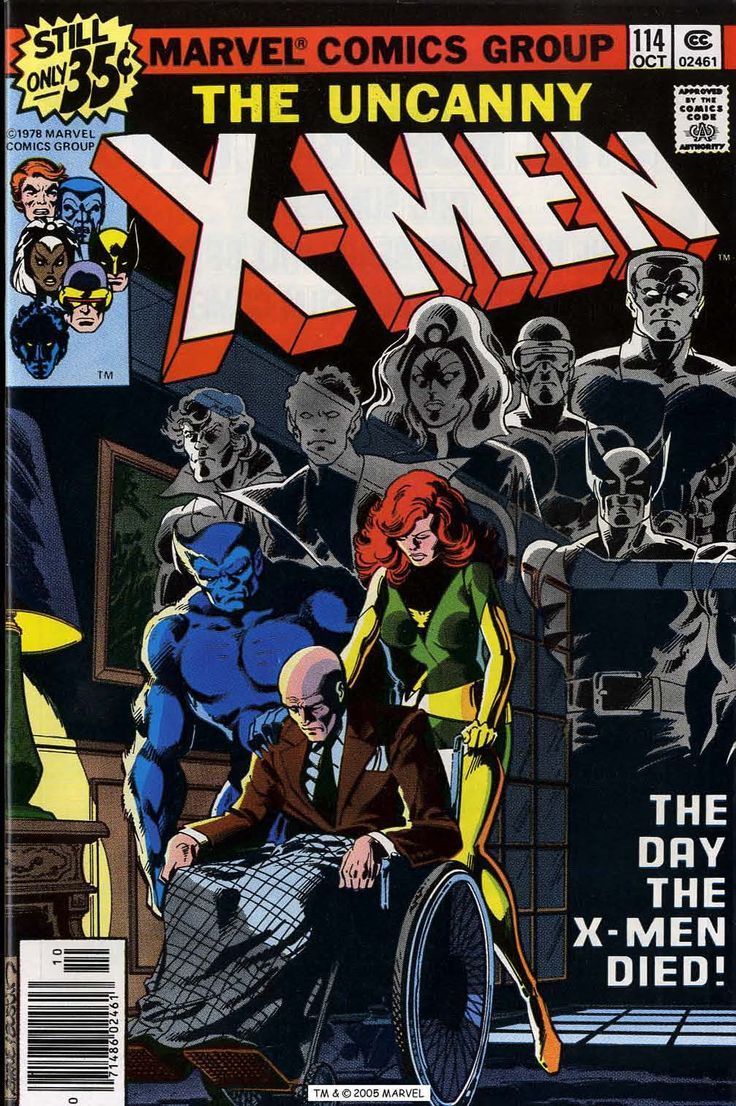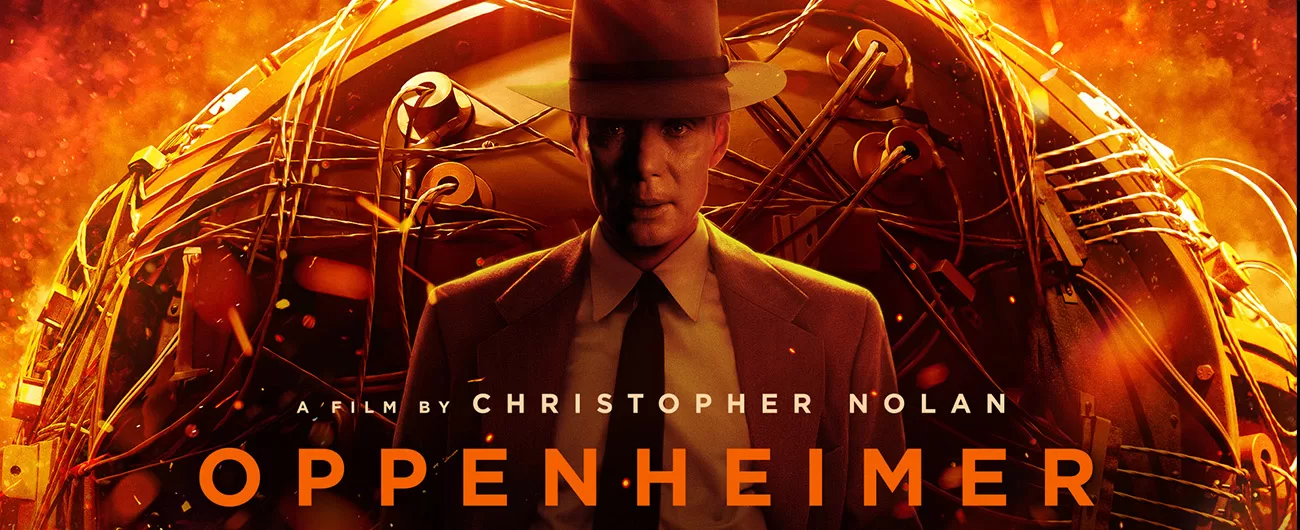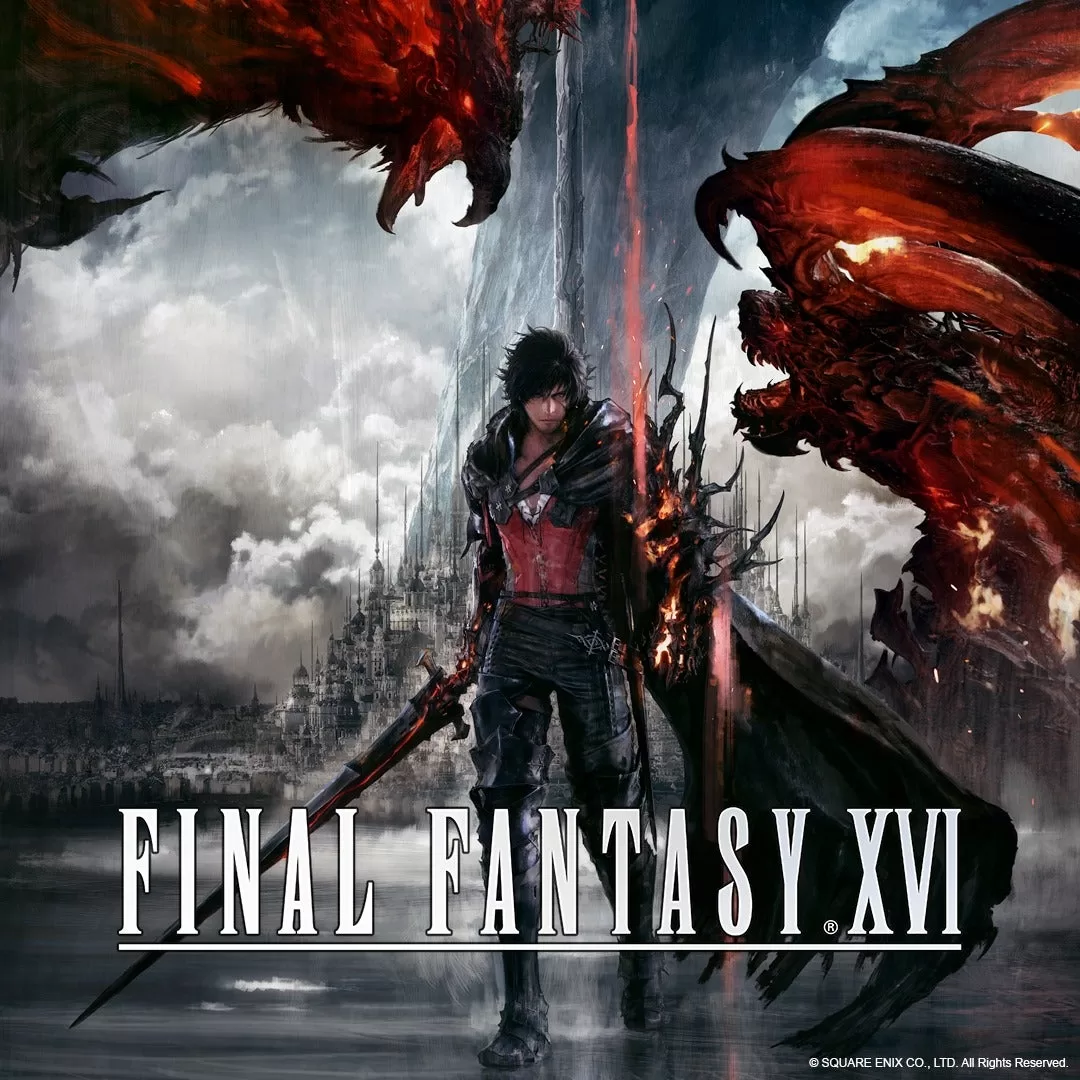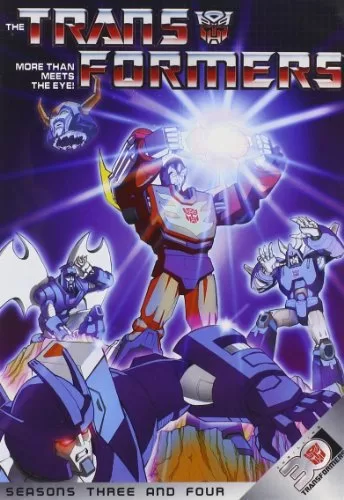
“The Day The X-Men Died!”: A Retrospective of Claremont’s X-Men, Part 3
John Byrne is an artist that needs no introduction, especially where the X-Men are concerned. If there is a single creator who comes even close to being as synonymous with the X-Men as Chris Claremont is, Byrne would be a very strong candidate. His work with Claremont on Uncanny X-Men in the late 70“s to early 80“s, both as artist as well as co-plotter, are to this day considered the glory days of the title. Byrne also came back to these characters a few times since, once as writer in the Jim Lee era in the early 90“s, once on the Wolverine solo title, and again in the early 2000“s with his X-Men: The Hidden Years series. Though Byrne is considered a controversial figure today, he“s a creator who“s always shown a deep love for the characters.
One of Byrne“s more interesting facets is the fact that he was more steeped in Silver Age X-Men lore than Claremont was. That comes across very strongly in his work on Hidden Years especially, where he connected the dots between the Roy Thomas/Neal Adams era to the Claremont era. He even worked in actual Silver Age stories into his own, such as a Magneto/Namor encounter that took place in a Silver Age Fantastic Four story. Byrne“s love of classic continuity could often be a double-edged sword, however””sometimes he made that history work for him, and at other times created continuity snarls where none had previously existed. In the case of X-Men, it became a point of contention between Byrne and Claremont, since Claremont mostly knew the Thomas/Adams run, and Byrne knew more of the previous history. At the same time, these differences made Claremont and Byrne a strong team, and it led to some of the greatest storylines in X-Men history.
However, it took some time before Claremont and Byrne led up to their most landmark works. Their first year together still led to some excellent comics, though most of them aren“t as well remembered as the Proteus arc, Days of Future Past, or the Dark Phoenix Saga. Claremont always played the long game very well, and his long-form style of characterization usually took time to flourish and deliver the big payoffs. At the start of their run, it“s still apparent that Claremont and Byrne were still finding their rhythm together as a team. Byrne“s art, while still at a high level, was still a bit scratchy and unrefined compared to his work on Dark Phoenix. Meanwhile, Claremont was coming off of working with Dave Cockrum, and at this time, he was still adjusting to working with Byrne on this title. Claremont was a writer who tended to play to the strengths of his artists, and it was a decision that often paid off during his seventeen-year run.
Not coincidentally, Wolverine began to truly emerge for the first time in these issues. This was no surprise, since Wolverine was John Byrne“s favorite character, and so Claremont played him up more. When Cockrum was the series artist, Nightcrawler would usually be more in focus, because Cockrum favored Nightcrawler. But under Byrne“s pen, Wolverine became more of the standout character than he was previously, leading to years of growth during the Claremont era. That becomes very noticeable in the first year of Claremont/Byrne, where Logan“s past with James Hudson and Alpha Flight finally comes back to bite him.

Following the end of the original Phoenix Saga, Claremont wisely opts for a couple of breather issues before turning his attention to the big threats again. This begins with the arrival of James MacDonald Hudson, now calling himself Weapon Alpha, who wants Logan to come back to lead Alpha Flight. Logan left the Canadian government under bad circumstances, and he always hated rules at the best of times. This prods Hudson to bring his old friend Logan back to Canada, using force if necessary. However, underneath the flag-covered armor, it“s clear that Hudson wants Logan to lead Alpha Flight because he“s reluctant to take the job himself. It“s the self-doubt and reluctance that makes Hudson an interesting antagonist; he doesn“t want to hurt his friend Logan, but he feels he has no choice but to do a duty he takes no pleasure in. However, Hudson ends up making enemies of the X-Men, as he unintentionally wounds Moira MacTaggart and gets into a protracted fight with the nearby Storm and Colossus. Hudson is eventually forced to withdraw, but he hasn“t given up on his mission to bring Logan back to the Canadian government.
Following this is a guest issue by Tony DeZuniga and Dave Cockrum that introduces the X-Men“s baseball games and a battle with a mercenary named Warhawk. Mostly, this issue is forgettable, and we never see Warhawk in these pages again after this. At the same time, this issue does two things worth discussing””it brings the Scott/Jean/Logan love triangle to the forefront, and it further establishes the background threat of Sebastian Shaw and the Hellfire Club. Up to this point, Jean and Logan had never been the epic romance that it“s treated as in other media; there were moments of romantic tension, but not that frequently. Starting at this point, and especially into the Claremont/Byrne era, we start to see that Logan has secretly fallen in love with Jean, though we don“t see her reciprocating these feelings. At this time, Jean is devoted to Cyclops, and if her feelings ever went beyond friendship, it“s not apparent in these issues. Likely, when the focus shifted to Logan with Byrne“s involvement, the idea of the love triangle with Logan took shape. Eventually, the idea would evolve, and we would eventually start to see Jean“s feelings change, but that was a gradual evolution.
Byrne would return with the following issue, and his presence would be consistent for quite some time afterward. The timing was perfect, since this is the lead-in to the first long-term story arc under Claremont and Byrne on this title. The X-Men are mentally enslaved by their old enemy Mesmero, who turns the X-Men into circus freaks. This leads to The Beast (then a member of the Avengers) returning to the mansion after discovering that the X-Men are missing. The story largely focuses on Hank as the viewpoint character as he investigates what really happened. It“s quite a good setup, paced very well, and while Claremont often overused the mind-control gimmick in his later stories, it works quite well here. Perhaps the high point of the story is when Wolverine manages to free himself of Mesmero“s control through sheer animal savagery, then slaps Jean to break her free of the mind control. Jean reacts in violent, unrestrained fury, hinting at the Dark Phoenix yet to come. It“s a good display of their relationship, with Logan being forced to hurt someone he loves and Jean“s fiery nature rising to the surface. Claremont always presented situations that showed different sides to his characters, putting them in challenging positions and encouraging them to grow from their experiences.
The Mesmero story ends with the return of Magneto, who dispatches Mesmero and hauls the X-Men off to his own Antarctic base. This is an intriguing story in the respect that while it“s a classic Magneto encounter, it“s not what one would expect from a Chris Claremont Magneto story. In later years, Claremont would usually try to dress Magneto in more noble motives, give him grand plans that he“s trying to achieve for mutantkind. There“s none of that here. Instead, Magneto is still feeling pain from the indignity of being de-aged into a child by Xavier and Alpha the Ultimate Mutant in another title. He then decides to inflict the same punishment back on the X-Men””he imprisons them, using devices to regress their motor and verbal functions to a state of infancy. He even creates a robotic nanny as a caregiver and warden. The whole setup is both diabolical and strangely funny in a macabre way, and the Nanny robot is a fun character to read in this issue.

At the same time, Claremont and Byrne make it clear that this is a torment, especially on Storm, who fears imprisonment because of her post-traumatic stress after being buried alive as a child. The scene where Storm tries and fails to free herself with her thieving skills is among the most powerful moments of the issue. We see the exhilaration and hope in Storm“s face as she comes so close to freeing herself with a lockpick, only to see it turn to despair as she loses her lockpick and headdress. Wolverine also has a good moment here, struggling against his bonds like a caged animal, only to come short of freeing himself. Eventually, the X-Men do manage to break their bonds and recover their motor functions, but the struggle is deftly handled by Claremont and Byrne in these pages.
The final battle against Magneto as the X-Men try to escape is one of the best encounters they“ve had in the history of the series. Magneto comes across as an impossibly strong and clever opponent, and the X-Men have to muster all their best ingenuity and teamwork just to survive the encounter. It“s also one of the best moments from Cyclops as a leader and tactician, as he uses a telepathic link with Jean to coordinate the group“s movements to attack Magneto. Even when the X-Men ultimately win the encounter, it“s by bare inches, and they pay a heavy price for it. The volcano that Magneto has been operating from becomes unstable, and while the X-Men escape, they“re separated, with most of the team presumed dead in the explosion. Jean and Beast are left to return to the mansion alone, while Scott and the remaining X-Men are lost in Antarctica with no way home.
Claremont would play with the idea of the X-Men being presumed dead a few times, most notably during the Australia period much later in his run. However, this is probably the period where he handled it the best. For one thing, he gave the X-Men“s “deaths”“ real pathos and drama. There“s a quiet moment where Jean gives the news to Xavier, and there are no words exchanged as they share their grief, not even telepathic ones. Byrne frames this scene beautifully, and it“s these quiet moments of humanity that represents the Claremont era at its finest. We also see Scott and his group struggle with the deaths of Jean and Hank, even though they“re lost and struggling to survive for nearly a year of publication. It“s the kind of story that probably wouldn“t work as well today, especially with the way comics fans have become jaded by deaths that don“t last. However, this story was published in a much simpler time, before commonplace resurrections and cheap event deaths became the norm in comics.
However, this setup also allowed Claremont and Byrne to establish a real long-term story arc. Claremont often enjoyed doing globe-trotting adventure stories, and the setup allowed Byrne to strut his stuff visually. The end goal of all this is to set the seeds of the Proteus arc, and get the X-Men to Muir Island at the right time to kick off that storyline. It also laid the groundwork for Dark Phoenix, moving Jean away from Scott and allowing Jason Wyngarde to plant his poison in her ear. While we“ll get into those storylines in future installments, in the short term, it allowed for fun adventures in exotic settings while taking a break from the big villains. While this period led to less memorable and “classic”“ stories, these adventure tales are still highly enjoyable and still delved into deep character work.
Perhaps the best of these stories is the first Savage Land adventure, and it still holds up as one of the best X-Men tales in that setting. Claremont never made any secret of his Edgar Rice Burroughs influence, which would eventually come back a few times during his tenure. The Savage Land was always intended as the Marvel Universe“s answer to Pellucidar, with Ka-Zar as essentially a Stone Age Tarzan. Mostly, it“s used as a way for superheroes to fight dinosaurs and savages with super-powers, and there have been great Savage Land stories that way. Here, though, Claremont and Byrne explore how the Savage Land itself impacts the X-Men on a character level. This is most apparent with Wolverine, who feels a sense of belonging because it appeals to his wild nature. However, we see this even with the other members of the team. Storm feels at one with nature in the Savage Land in a way that she doesn“t elsewhere. Meanwhile, Scott struggles against it, needing to make order out of chaos while also cutting off his feelings to deal with his grief. We even see Scott trying to get out of the Savage Land as fast as possible, claiming it“s out of concern for the defenseless Professor X. Deep down, though, the Savage Land is a place that Scott doesn“t react well to, because it goes against his structured, ordered mindset. Claremont and Byrne thought out how each character would react to the setting, and it“s fun just to watch their exchanges in the time they have in the Savage Land.

Beyond that, the villains in these issues are quite solid, even if they“re not among the top-tier X-Men villains like Magneto. There“s a real love for the Roy Thomas/Neal Adams Savage Land story that permeates this entire arc, and both Claremont and Byrne were steeped in that influence. The Sauron encounter is rather well done, and pitting him against the new team is entertaining as a one-issue event. Byrne especially works in his horror influences, showing how the Sauron-mesmerized X-Men see their teammates as monsters. While Byrne is renowned for his superheroes, he also has a gift for the macabre that he“d display from time to time during his run on the book. The result is a truly fun superhero comic, with Claremont and Byrne rolling on all cylinders.
The Savage Land arc ends with the arrival of Garokk, the Petrified Man, and his plan to turn the Savage Land into a utopia. However, Garokk is unaware that his plan to reshape the Savage Land would actually end in its ruin, reverting it back to a frozen wasteland. To this day, Garokk stands among the best Savage Land villains, since he has a larger vision he wants to achieve, and his goals are understandable from his point of view. Moreover, he presents a real threat to the X-Men and to the Savage Land itself, acting from motives that he believes to be just. Claremont always did some of his best work with morally complex villains, whether that“s Magneto, Mystique, or even one-time antagonists like Garokk. At the same time, he“s also a genuine threat, as he manages to capture Ka-Zar and half the team, leaving Wolverine, Storm, and Nightcrawler to stage a rescue. It should also be noted that the setup of this issue is visually impressive, with Byrne presenting a well-crafted opening splash page and following up with well-choreographed action scenes.
This situation leads to Storm, Logan, and Kurt emerging even more strongly as fixtures of the series, giving them distance from Cyclops. Wolverine is the breakout star of this issue, between his friendship with Ka-Zar“s tiger Zabu and his fight with the dinosaurs in the sewers of Garokk“s city. This issue also establishes Wolverine“s healing factor during the sewer encounter as well. However, Storm and Kurt also get good, strong moments in this issue, and the dynamic between the three is firmly cemented by the end of the story. The resolution is also satisfying here, with a good confrontation scene between Cyclops and Garokk, and also a great scene where Storm struggles against her claustrophobia as she tries desperately to save Garokk“s life. At this time, Ororo was still someone who valued life deeply, and Claremont enjoyed testing that commitment with difficult predicaments. In many ways, the character dynamics crystallized with the ending of the Savage Land story, giving everyone good moments and strong points of character development.
Claremont and Byrne take a break from the main team for the next issue, looking back into the past of Charles Xavier. From the outset, I admit that Xavier is a character that I“ve often struggled with. There are many portrayals of Xavier that are quite good and portray him positively, especially Claremont“s take and the version from X-Men: The Animated Series. At the same time, Xavier is very often shown in a villainous light in many X-Men stories, both in the Silver Age and in more modern stories, especially in the 2000“s X-Men titles. Claremont did his best to minimize this and genuinely show Xavier as a mutant rights advocate and a concerned father to his students, but even he contributed somewhat to Xavier“s more problematic legacy. This issue is among the better ones, introducing Amahl Farouk, who would later become the Shadow King, and explaining why Xavier is so driven to oppose mutant villains. It also introduces some more interesting backstory, including how Xavier found young Ororo in Cairo during her time as a thief. Farouk initially seems like he was intended as a one-off villain for Xavier to defeat, and he fulfills that purpose quite well. However, he“s a villain who would eventually make a comeback later, first in Claremont“s run on New Mutants and in the Muir Island Saga at the end of his first run on Uncanny X-Men.

The next stop in the X-Men“s global adventures takes them to Japan, which is being held hostage by a villain named Moses Magnum. Magnum is a villain who would often make small appearances in various titles, fighting different heroes depending on the story. Up until that point, Magnum had mainly faced Spider-Man and Luke Cage, before turning his sights on Japan. The X-Men have just arrived around this time, having been rescued on the high seas by a Japanese ship. At this point the team is desperate, with no ways to establish who they are and with no real friends or contacts except for Sunfire. At this time, the team is on strained terms with Sunfire, who had left the mansion insisting that they not try to ask him for any more help. Given that the team has no other options but to turn to Shiro, this leads into a reluctant team-up that neither side is particularly happy about. Still, because the X-Men are heroes and they need the help, they agree to defeat Magnum in exchange for help in returning home.
The Magnum storyline is mostly not that memorable in and of itself beyond the ending. However, it does introduce Mariko Yashida, who would go on to be the great love of Wolverine“s life. She would be introduced as Sunfire“s younger cousin, and she comes across as a dutiful Japanese lady. This issue helps to set up the romance, which would be referenced on and off until the landmark Wolverine limited series a few years later. This issue also introduces Logan“s past in Japan, though it“s mainly used to set Wolverine up as the team“s translator during their Japanese adventures. The encounter itself is not that remarkable, but it does set the groundwork for much better stories, especially during the Paul Smith era.

However, the story ends with Banshee straining his voice beyond his limits in order to save Japan from Magnum“s doomsday device. Magnum is presumed dead in the battle, though a Classic X-Men reprint of this issue establishes that he is saved by Apocalypse, a villain who wouldn“t be created for several more years. After this, Banshee loses his powers, seemingly permanently, leading him to walk away from the X-Men. Mostly, he“s around in a state of retirement on Muir Island for quite a few years, until his powers came back in a Marvel Comics Presents story. Claremont probably intended for the power loss to be permanent, to show the consequences of the superhero lifestyle and have the characters move on with their lives. That ended up being the case for quite a few years, though Banshee does make a few interesting guest appearances until his powers are restored.
All in all, I“d describe this period as the “fun and games”“ part of the Claremont/Byrne run, and it gets off to a fine start. It also sets the stage for many bigger stories to come, stories that would be regarded as landmark classics for the title. The teamwork and the creative energy flowed constantly during this period, and it“s a period that still largely reads well even to this day. Still, the Claremont/Byrne era still had greater heights to reach, culminating in the X-Men“s greatest tragic story.
Author Profile
- Steve Sellers had been a fan of superheroes ever since Superman: The Movie. But it took the JSA, the Legion of Super-Heroes, Dragonlance, Lord of the Rings, Twilight Zone, and Chris Claremont's legendary run on the X-Men to make him a writer and a longtime fan of comics, fantasy, and science fiction. Steve is the co-creator of WHITE DRUID & MICHAEL NERO and GUARDIANS OF ELAYIM for Omen Comics, and he is also the creator of BLITZ and SHOCKWAVE for Revelation Comics (an imprint of Omen Comics).










